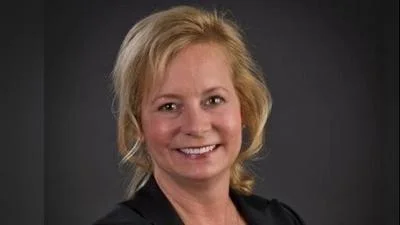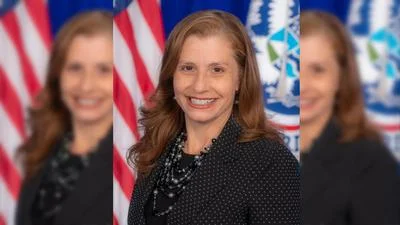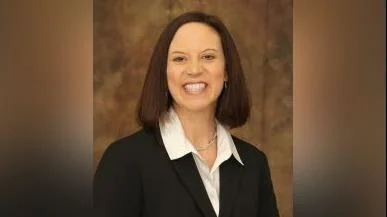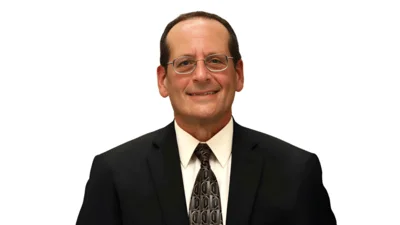Oak Park and River Forest High School Committee of the Whole Board met February 14.
Here is the minutes provided by the Committee:
Mr. Weissglass called the meeting called to order at 6:35 p.m. in the Board Room. Committee members present were Thomas F. Cofsky, Fred Arkin, Jennifer Cassell, Dr. Steve Gevinson, Dr. Jackie Moore, Sara Dixon Spivy, and Jeff Weissglass. Dr. Joylynn Pruitt-Adams, Superintendent, and Gail Kalmerton, Executive Assistant/Clerk of the Board of Education and FOIA Officer.
Also present were Tod Altenburg, Chief School Business Officer; Amy Hill, Director of Assessment and Research; Philip M. Prale, Assistant Superintendent for Curriculum and Instruction; Nathaniel L. Rouse, Principal; Karin Sullivan, Director of Communications and Community Relations; and Dr. Gwen Walker- Qualls, Director of Pupil Support Services.
Visitors: Sheila Hardin, Faculty Senate Executive Committee Chair; Marci DiVerde, Chris Thieme, Earline McLaughlin, Andrew Boland, and Jason Dennis, OPRFHS faculty and staff, Joe Perkoski, Robbins, and Schwartz; Joe Lightcap of Baker Tilly; Christopher Iseli, community member; and Steve Schering of the Oak Leaves.
Public Comments
None
Minutes
Mr. Weissglass moved to approve the Committee of the Whole minutes of January 17, 2017; seconded by Dr. Moore. A voice vote resulted in motion carried.
Technology Update - Interactive Virtual Reality (VR)
Committee of the Whole members participated in a virtual reality experience. They downloaded a VR app on their cell phones and then the cell phones were placed in a cardboard viewer. The viewer is instantly immersed in the media. The members and audience were able to take a pilgrimage to Mecca, Pluto, or have an underwater experience listening to dolphins and whales.
Students now have the ability to participate in virtual field trips to locations that were previously impractical to visit. They can visit museums all over the world, visit historic sites, visual artifacts, and see storytelling of subject matter experts from around the world. An English class could study Shakespeare could do a 360 tour of the Globe Theatre. One venue allows the visitation to museums to compare and contrast different moves in art over a certain period of time. Google Arts and Culture has billions of curative art, virtual field trips, artifacts from public museums, nonprofit organizations, etc. This service is free with Google Account access.
Bright/Bytes Survey Results
Participation in this survey was good (824 students, 223 faculty and staff, and 404 families). The trend was positive overall. The survey reported growth in technology access, technology skills, and the technology environment in general. Areas of continued focus include Digital Citizenship, incorporation of technology into instruction (use of the 4Cs of 21st-century skills – critical thinking, communication, collaboration, and creativity), and professional development. Students reported improvement in barriers to utilizing technology in their learning. It is reasonable to attribute this to the 1-to-1 initiative. Teachers have done well in dealing with the classroom management issues introduced by the 1-to-1 initiative. Teachers also reported that they are comfortable with learning technology.
EOS Status Report
Mr. Rouse and Mr. Dennis presented the EOS Status report as an informational item. Mr. Rouse clarified that EOS helps identify students to place in AP classes; it has nothing to do with detracking. OPRFHS had reached out to 150 of the targeted group of 240 students to register for AP classes. In the future, the District will be able to reach out to all targeted students because it will have increased supports. Mr. Rouse said the biggest barrier has been informing relationships and telling the students that they can be successful, offering supports, i.e., teacher-to-teacher, student-to-teacher, student-to-counselor, etc. The District will be better at finding those students in the future. Having more than just one student of color in a class will also be helpful.
The Equity Pathway Report presentation broke down highlighted data sets to start the conversation as to what the District was doing. The report showed that that 244 students were missing from equal representation in AP classes. Approximately 150 students can be supported academically and socially emotionally relative to this experience. Each of these students has had one-on-one conversations with first time AP students. The EOS determined the benchmark of 244 by using the District’s integrated data of the percentage of middle and high income white and Asian students in the District; 75% of the white and Asian students took one AP course. Does this translate 150 for one AP class or multiple classes? While minimally one, some students may enroll in more than one AP course. Will all of the requests be accommodated? Yes, but they may lose a College Prep or Honors class.
Chart 8 explained to students that the top three things teachers named for students being in AP classes were student motivation, perseverance, and interest not about prerequisite and test scores. Outreach planning includes working with the students and the parents, etc. Success looks different for different students. A “C” in this course will not mean the student was unsuccessful.
Teachers are being informed of the explicit supports for students listed in the document titled Huskie Scholar Academy (HSA). While these students may have academic skill set deficits, it is about them feeling a sense of belonging and confidence. That mindset is a prerequisite to the skills in the class for students, teachers, and for the community. Much of this plan is an attempt to address that critical component that students believe they can be successful in an AP class. OPRFHS will be prepared to adapt and support the students in all of their needs.
Mr. Rouse will provide a breakdown of the students by gender at the regular meeting.
Ms. Cassell commented that Huskie Scholar Academy has a board of individuals to lead the way, and having a cross representation of family was important. A summer bridge program is being developed for these students. The District can provide many supports, but if the students don’t feel like they belong or seek out the support, the motivation may not be there. The design of the course is to develop the relationship with the teacher, a sense of belonging, confidence and providing skills sets.
Dr. Moore asked:
1) How much information was gathered from current students of color that are taking AP classes to
give input on their experience of taking AP for the first time?
2) How much information was gathered from students who dropped out?
3) Would these same students be included in the summer support program?
4) How will teacher outreach be addressed relative to relationships, cultural competence, etc.?
Mr. Dennis stated that much of this is informed by students in a variety of scenarios. An attempt was made to create a study space for students of color after school hours. This was advertised throughout the school via Motivational Mentorship, the Tutoring Center, lunch periods, etc. At freshman student at Yale made brief video clips about his/her life at Yale at that time and then followed up with brief video clips about his/her life when he/she was a junior. The clips were about what he/she had known as a freshman and what he/she knew as a junior. Yale now mandates that all students watch these video clips. They address the fears that this student had but how he/she went on to be successful. The peer mentoring piece for students of color is important. They need to be highly involved. The District is trying to build a structure to get both quantitative and qualitative data and to be able to give supports as necessary. The outreach to the teacher piece is part of the professional development on cultural competency. Because of limited professional development during the school year, the District is planning some in the summer for AP teachers. The sense of belonging for students is important and the District is trying to make sure it has feedback and that teachers are aware of the support to make this program feel like it is a unified wrap around approach for students.
Questions have arisen about the rollout of EOS, is the teacher voice missing, differentiated teaching, class size, teacher support, spaces, and how to make the environment welcoming, etc. With regard to class size Ms. Courtney Daikos, the OPRFHS EOS coordinator, has stated that class size has not been changed at other districts.
Another question posed by Dr. Moore was what had the EOS consultant brought to bear on this environment that could not have been done in-house as underrepresented groups in AP classes are common knowledge. Skill set? Infrastructure? What is EOS doing? Mr. Rouse reported that the District has struggled to find the students and to put them in courses. EOS surveyed students and staff and came up with pathways and trends. The experience the first year has been worthy. What the partnership means in year 2 is a further conversation.
Dr. Gevinson reflected that EOS has said it has been a market system for enrollment. He believed students have been able to enroll in whichever courses they wanted. The institution has not given them the encouragement that EOS does. He believed providing this adult encouragement will increase the numbers and define success differently; taking an AP course is positive. Dr. Pruitt-Adams stated that at no point were educators overlooking students but EOS has caused the District to be focused on a bigger picture and look more linearly and in depth at the missing students. It gave the students a voice in what they are feeling, of not being approached, or of not being successful. For educators, it has focused more reflective and deliberate actions.
Dr. Moore was uncomfortable saying to any student that getting a “C” in an AP course was acceptable. She wanted the students to be shown data to know about the experience and understand the work. Her children had tutors and her children had to learn to help in ways for which they were not accustomed. The amount of work is different in an AP class. It needs to be communicated that students get A’s and B’s all of the time in AP classes.
Ms. Spivy stated that the discussion about encouragement versus skills resonated with her. As this moves forward, she suggested that a series of interviews to flush this out more.
With regard to resistance, Mr. Arkin as if the 94 students who choose not to register for AP classes could be moved to honors or AP.
Mr. Weissglass appreciated the effort, thoughtfulness, intentionality, and that everyone was growing into this. Board of Education members, administration, and the faculty and need to continue to find more areas in the school.
Resolution in Response to Local Government Travel Expense Control Act
The Committee of the Whole unanimously recommended moving the Resolution in Response to Local Government Travel Expense Control Act to the Special Board Meeting following this meeting for approval. The Illinois General Assembly by enacting Public Act 99-0604, known as the “Local Government Travel Expense Control Act”, which Act became effective on January 1, 2017; and pursuant to the Act, non-home rule units of local government, including school boards, are required to establish regulations with respect to allowable travel expenses. By March 2, the District must have established a protocol for approving of expenses that exceed the maximum allowed by policy. The Board of Education’s maximum allowable reimbursement for travel, meal, and lodging expenses shall be nine hundred dollars ($900.00) per day for each Board member, administrator, and employee of the District.
Discussion ensued about whether the maximum amount of $900 was too high. Last year the highest per day total was $678.00 for hotel, transportation, and meals. Expenses must go through the regular approval process of the District.
Board/Finance Committee Goals Update
Mr. Altenburg provided the following update on the Board/Finance Committee Goals.
1) Compensation: An update will be presented at a future Committee of the Whole Meeting.
2) Metrics: This conversation continues as the Board’s goals for the Strategic Plan have not been finalized.
3. Cost Containment: Based on feedback and discussion at last month’s Committee of the Whole
meeting, the District Leadership Team’s revised definition of “cost containment” is on tonight’s agenda.
4. Facilities: The Administration is in the early stages of a new process for this work.
Definition of Cost Containment
No Update
FY 2016 Audit Joe Lightcap of Baker Tilly prepared the audit of the financial statements of OPRFHS as of and for the year ended June 30, 2016, in accordance with auditing standards generally accepted in the United States of America. It considered its internal control over financial reporting as a basis for designing the auditing procedures that are appropriate in the circumstances for the purpose of expressing its opinions on the financial statements, but not for the purpose of expressing an opinion on the effectiveness of its internal control and thus do not express an opinion on the effectiveness of the internal control. Baker Tilly identified certain deficiencies in internal control that it considers material weaknesses.
A deficiency in internal control exists when the design or operation of a control does not allow management or employees, in the normal course of performing their assigned functions, to prevent, or detect and correct misstatements on a timely basis. A material weakness is a deficiency or combination of deficiencies in internal control, such that there is a reasonable possibility that a material misstatement of the entity's financial statements will not be prevented, or detected and corrected, on a timely basis. We consider the following deficiencies in the District's internal control to be material weaknesses:
● Internal Control Over Financial Reporting
Like many entities of its size, the District does not maintain an external financial reporting department or function but relies on its audit firm for this purpose. This includes calculating adjustments to convert the District’s internal cash basis information to the modified accrual basis of accounting used for external reporting of the District’s funds, drafting the individual fund statements, making government-wide conversion entries, drafting the government-wide statements, preparing note disclosures and preparing the Schedule of Expenditures for Federal Awards. Without the assistance of the audit firm, it is likely that the District would be unable to prepare financial statements that are in accordance with generally accepted accounting principles and unable to prepare the Schedule of Expenditures of Federal Awards in compliance with federal requirements in the format required by the Illinois State Board of Education. While this is defined as a material weakness by accounting standards, as a practical matter, it may not be a cost benefit for the District to mitigate this weakness. Employing an individual who remains current on the ever-changing accounting and reporting standards can add significant financial cost to your internal control process.
● Bank Reconciliation Procedures
The District performed expected accounting functions throughout the fiscal year including Accounts payable, payroll, recordation of revenue, and tracking of outstanding checks. However, due to staffing constraints, the District was unable to fully resolve all of the unlocated differences in their monthly bank reconciliations. This resulted in Baker Tilly performing extended audit procedures to ensure the District's cash was not materially misstated. A recommendation was made that the District should review staffing levels, review practices, and prioritize tasks in order to ensure adequate time and energy is devoted to completing bank reconciliations. That is beginning to be implemented.
● Journal
The District does not have a control in place to review and approve journal entries by someone other than the original preparer. Access is currently not restricted in the accounting system and an individual can create and post a journal entry without an intervening approval. Also, as a potential alternative control, there is no back end review of journal entries such as an activity log that is reviewed at month end. Finally, the cash receipts module in the accounting system allows a user to effectively make direct adjustments to cash, as it allows a user to post negative cash adjustments. There is also no process to review or approve these entries. A recommendation was made that the District implement controls for the review and approval of journal entries by someone other than the original preparer. If a front end control such as an access restriction between the preparation and review is not feasible, the District may consider a back-end control such as review of a journal entry log by a managerial employee. The District should refrain from usage of the cash receipts module to process adjustments. If the cash receipts module must be used to process adjustments, the District should implement controls similar to those recommended for the manual journal entries. The District has implemented this recommendation.
Baker Tilly works for the Board and if they have questions or concerns, they should reach out to it. The language on accounting standards that have been implemented and thus financial statements will look differently going forward. The final letter is a boilerplate, as there were no other irregularities. Mr. Cofsky made the recommendation that when things are material, a formal report should be made to the Board of Education via EOWN updates as to the material experience.
The following were highlighted:
Page 1: Statements are reasonable and can be relied on by the users. It is a clean report. The management discussion explains what happened from the prior year.
Page 17: This schedule puts all of the District’s funds together, adding capital assets and long-term debt and ends in a net position.
Page 18: Net pieces: increases or decreases over time. This year there was a decrease of approximately $5 million.
Page 22&23: Income statement by fund, short-term perspective. Revenue needs to be received within an operating cycle. FY 2016 is compared to FY 2015. The fund balance decreased by $9.6 million, as planned. This is a point in time.
Page 22: Debt service fund. Used existing resources to spend down the debt.
Page 24: States the reasons for going from $9.6 million to $5 million.
Page 29: Notes, accounting policies of the district, capital assets, IMRF and TRS funding, etc.
Page 57: The Liability Sheet now includes IMRF. The retirement cost increased from $4.2 to $8.5, reflecting how the plan did on investment returns. IMRF exceeds at looking at funding and modifying employee contribution for short-term swings. This does not do anything annually. It does not change too much year over year and it does not impact operating expenses.
Page 59: TRS Pension Liability 2015 2016
District's proportion of the net pension liability 0.00836243% 0.00393774% District's proportionate share of the net pension liability $ 5,089,229 $ 2,579,615 State's proportionate share of the net pension liability $ 154,195,497 $ 195,999,730 Total net pension liability $ 159,284,726 $ 198,579,345
The District share went down because federal contributions went down. The state’s share of the TRS liability increased by 27%. If the contribution increase of OPRFHS is higher than its peers, the state’s share of the District’s liability goes up. It is nothing the District is doing; it is more about the total liabilities of the District. OPRFHS’s contribution went up at a higher percentage than the other districts in the state. The year-over-year contribution could change based on hiring.
In Baker Tilly’s opinion, this is a clean report on the financial statements. Again, the fund balance decrease was a planned event by the Board of Education.
Variance Report - 2nd Quarter
No Update
Adjournment
At 8:25 p.m. on Tuesday, February 14, 2016, moved to adjourn; seconded by. A voice vote resulted in all ayes. Motion carried.
https://intranet.oprfhs.org/board-of-education/board_meetings/Committee%20of%20the%20Whole/2016-17/Minutes/20170214CommitteeoftheWholeMin.pdf





 Alerts Sign-up
Alerts Sign-up